I've edited the html code for the pictures to load from my site. Otherwise it is as original.
Please do not use this an an example of how to install your generator. It is wrong and very dangerous!
Four-gallon gas tank runs about eight hours at normal load
The cost of this motor generator is about $1,000 shipped from Master Distributors
(Click on small picture for bigger picture)
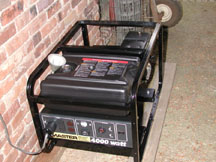 ....
....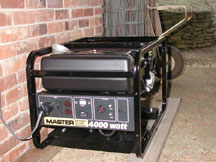
Panel-end of Generator * Funnel and tube is for loading oil
. ....
....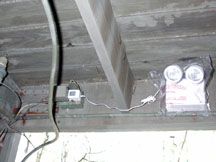
Generator Starter End
Emergency Lighting for Generator
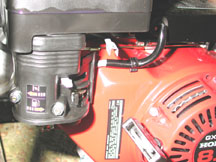
Choke: upper (white) lever & Gas
Valve: lower (black) lever
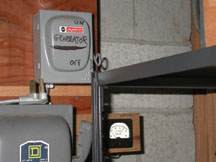 .....
.....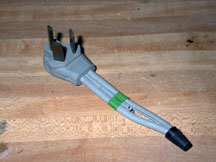
Disconnect Switch and Ammeter
* Dryer Shorting Plug (to transfer power to other half of
the house)
Discussion
The generator does have a center-tap 240-volt output However, I have a 'peculiarity' that others may also have, and that is the house is "unbalanced". One leg of the house wiring needs 10 amps while the other leg needs 20 amps. If I use the 240-volt output, I can only power the 10-amp part of the house, because the 20-amp load will trip the 16 amp circuit breaker in the 240-volt center-taped generator.
The procedure is to first pull the main fuse block. Then the generator is connected to only one-half of the house electrical service through a disconnect box. Therefore, I devised a "shorting plug" to plug in where the the electric dryer is normally plugged in. This allows the 120-volt output to be transferred to the 'second' electrical leg of the house. The generator is putting out, let's say, 30 amps. In the dryer wiring (which has much larger gage wire than regular circuits), there is only 30 amps in each hot wire -going in one and out the other. This is the only wiring in the house that carries the full generator current.
The generator has no ammeter, so I bought a simple ac ammeter and placed it in the generator connecting wiring. When the current gets up near the 33-amp maximum, I can note it and reduce the load. 4,000 watts can run the furnace, most of the lights, and TV at the same time, but not anything that requires 240 volts.
Of course, it's important that this plug be removed when inserting the main fuse block after power is restored!